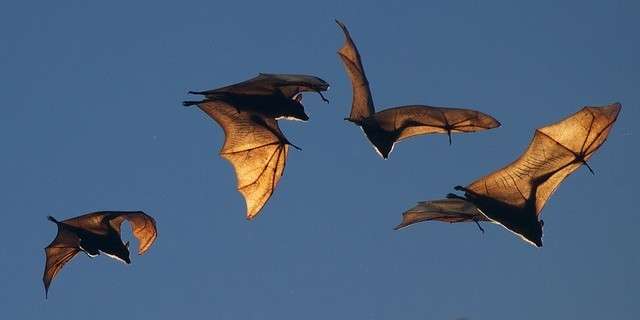
I sat on our back porch after sunset one evening this week. I was looking for them. The light was dying fast, which was why I was there. I kept scanning the skies over our backyard and our neighbours’ yards, looking, looking. One of my grandchildren was with me and wondered what I was doing, why I was so intent.
“They should be here by now,” I said softly.
“What should be here?” he asked.
“The bats,” I said. “I haven’t seen them this year.”
After my evening stint scanning the skies, I did a bit of research. And I’ve learned some of the reasons why I haven’t seen many bats around Uxbridge the past few years. I was surprised to read on one park service website as many as 45 different species of bats frequent the U.S. and Canada. Many of those species have suffered massive losses from a fungus known as Geomyces destructans (white-nose syndrome). By massive, I mean millions of bats killed across Ontario, Quebec and New York State.
“We stopped counting at five to seven million,” biologist Craig Willis told the Ottawa Citizen in 2019. “Now it’s millions and millions and millions.”
But what scientists quickly point out – not surprisingly – is that interaction with people accounts for nearly as much of the bat demise as disease. Most bat varieties in North America try to roost in cliffs, caves, tree trunk crevices, bridges, barns or even abandoned mines. Well, we don’t have many cliffs, caves or abandoned mines in these parts.
But thanks to a strip-mining approach to urban planning and housing development in the GTA over the past 30 years, old-growth trees and abandoned barn lofts are in short supply. Indeed, a small livestock barn just a couple of lots away from ours was demolished in recent years, the same period when I watched bats vanish from the skies over my backyard.
The coup de grâce for bat species surviving in North America, however, may well come from that other side-effect of the environment – climate change. To be fair, there is no evidence linking climate change to white-nose syndrome. But by just about every other yardstick of human contact with the wild, humans are guilty of snuffing out bat populations every day. Our elimination of carbon-reducing rainforests and increased generation of greenhouse gases have clearly destroyed habitat, created erratic winters, and raised the temperature of the planet.
“So what?” say the climate-change deniers.
According to bat scientists, bats migrate short distances from summer roosts where they rear their pups, to winter ones where they hibernate. The more we alter the Earth’s temperature, the more we affect the migration and breeding patterns of the bats detrimentally.
Again, the experts say hibernating bats prepare for winter by accumulating fat reserves; but if the temperature rises suddenly – because of an abnormally warming climate – the bats awaken, consume more energy, and run the risk of starving. The upset also delays fertilization, and reduces the survivability of the offspring.
So, what does having fewer bats swooping over our yards mean? The most obvious impact is higher insect populations. According to the American Wildlife Federation, bats are Nature’s best pest controllers – consuming vast quantities of moths, house flies and mosquitoes. U.S. agriculture experts say that bats save the industry between $3.7 and $54 billion in pest-control services.
The Seacology website says a single bat will eat hundreds of mosquitoes in a single night. In so doing, bats have also become Nature’s naturopaths – reducing the potential spread of lethal diseases such as West Nile virus, zika, malaria and other deadly pathogens.
Bats also turn out to be great pollinators. Like bees they collect nectar from flowers (as well as insects) and thus pollinate over 700 different plants – including bananas, breadfruit, avocados, dates, figs, peaches and mangoes.
Maybe we need to change that old yardstick of life to, “The birds and the bees and the bats!”
Amid all the doom and gloom about human detrimental effects on bat populations, there is some positive news. Scientists around the National Capital Region have decided that a happy bat is a fat bat. So, they’ve begun to build and install “bat boxes,” or portable roosts, near existing wetlands where the bats regularly feed.
In addition to replenishing bat habitat, when the bats take up residence, naturalists regularly check and clean the boxes of traces of white-nose syndrome fungus.
I know it sounds absurd – about as absurd as any politician this election denying climate change or anti-climate-change policies – but I’ll put a bat box in my backyard, if only to be able to show my grandkids that bats – like the environment – are worth saving.
I agree with you whole heartedly Ted! My husband incorporated a bat shelter in our eaves many years ago. We have seen very few bats for some time now, both here in Uxbridge + even up at our cottage in the Kawarthas. It is very troubling. We have always admired these amazing little creatures!